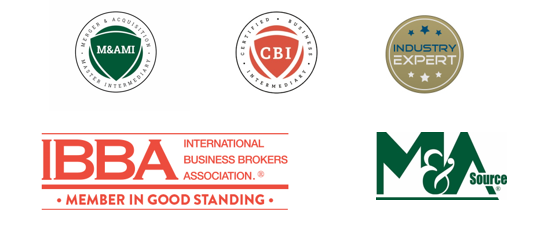Don’t Be Too Picky When Choosing Buyers
Selling your business is a process—one that requires casting a wide net to attract as many interested buyers as possible. Some sellers, however, come into the process with a fixed idea of their ideal buyer and insist on only engaging with that type. While it’s understandable, this approach can be a mistake if done too early.
There are three main types of buyers:
1. Financial buyers – such as private equity groups or family offices
2. Individual buyers – entrepreneurs or first-time business owners
3. Strategic buyers – companies within your industry looking to expand
Many business owners assume that a strategic buyer is their best option because they already understand the industry and may have the financial resources to complete the deal. While that’s sometimes true, buyers can surprise you. In cases where a strategic buyer seemed like the best fit, an individual or financial buyer ended up being the better choice.
To maximize your chances of a successful sale, keep an open mind. Here’s why:
1. There’s No Such Thing as a Perfect Business
Every business has flaws, and buyers have different motivations for making an acquisition. Some are looking for market share, innovation, talent, intellectual property, customer base, synergies, or financial gain (which is a common driver for all buyers).
During the M&A process, unexpected challenges can arise—such as a decline in company profits—that may lower your business’s valuation. A company that initially seemed like a great fit for a strategic buyer might now align better with an individual buyer’s budget. If you only focused on strategic buyers, you might have overlooked other strong potential buyers.
2. Let the Process Identify the Best Buyer
Selling a business requires a structured M&A process designed to create a competitive market of buyers. This includes:
- Developing marketing materials (teasers and a Confidential Information Memorandum, or CIM)
- Identifying potential buyers through databases and industry lists
- Setting a timeline for Indications of Interest (IOI) and Letters of Intent (LOI)
At the start, your goal should be to generate as much interest as possible. This is not the time to be selective. A strong M&A process will attract IOIs from financial, individual, and strategic buyers. Once you begin reviewing these offers, you can start narrowing down your options.
3. More Offers Lead to a Higher Selling Price
A well-executed M&A process should generate 5–15 IOIs, giving you multiple offers and stronger negotiating power. If you limit yourself to one type of buyer from the outset, you may miss out on better offers.
Selling a business typically takes 6–12 months, and around 90% of potential buyers never complete an acquisition. That’s why it’s critical to connect with as many interested buyers as possible early in the process.
Trust your M&A advisor, keep an open mind, and let the process do the work. You might have a certain buyer in mind—but in the end, the best buyer might surprise you.

This article was written by Sam Thompson, CBI, M&AMI. Sam is the president and founder of Transitions In Business, a Twin Cities based M&A firm that specializes in selling business to business and healthcare, transportation, manufacturing, distribution and construction/trade services companies. Sam is a Merger and Acquisition Master Intermediary (M&AMI) and a Certified Business Intermediary (CBI) who has successfully guided countless business owners through the sale or merger of their company. Prior to becoming a business broker, Sam was a successful CEO and business owner for 29 years before selling his $16 million conference and event management company. If you have questions about this article and would like to connect with Sam click on the link below.


